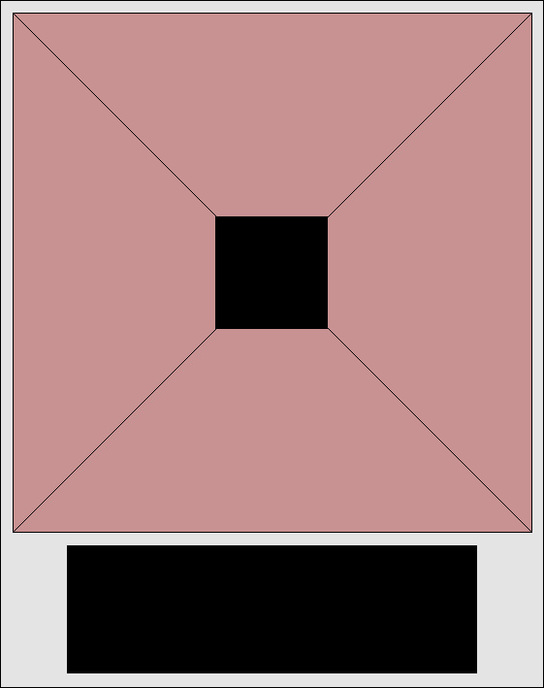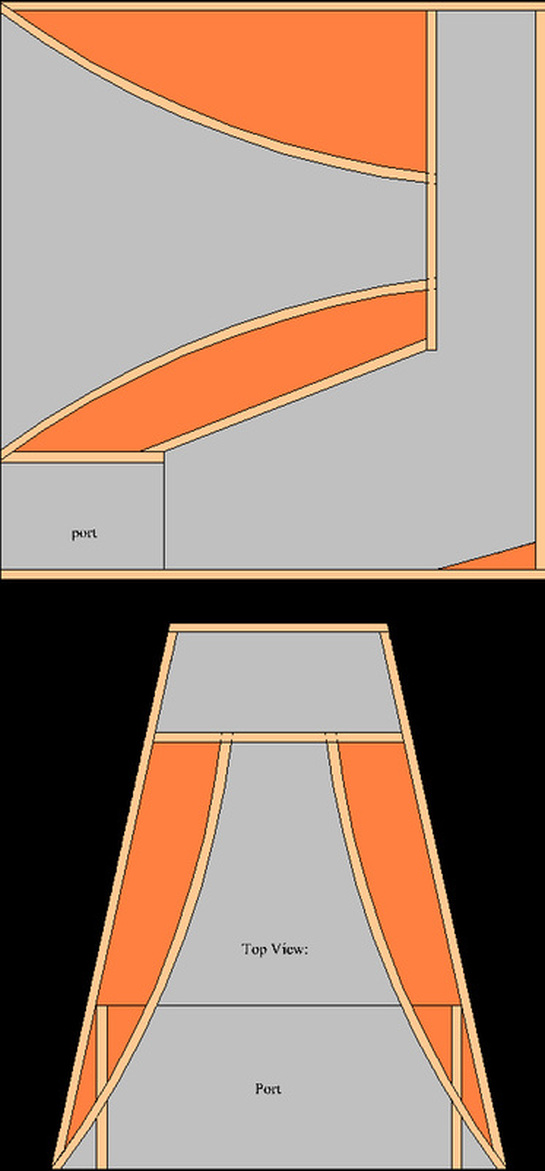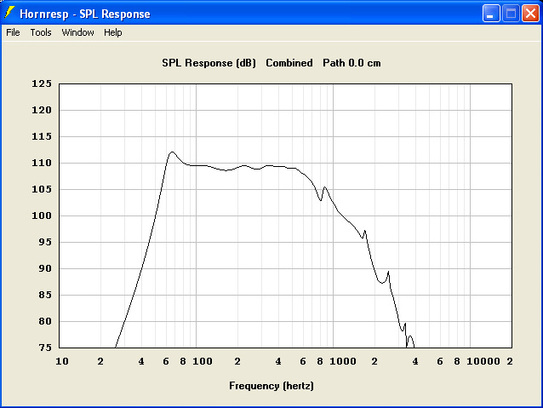Horn in bass reflex enclosure:
Hi. I'm exploring an improved version (fewer compromises) of my Altec A7 horns.
My wife listened to my A7s and complained that they made the midbass sound muddy. Her hearing is much sharper than mine, so I believe her when she says something about the A7 isn't working.
Part of the problem, it appears, is the fact that the curved horn walls are thin and tend to resonate. Since bass/midbass is loaded with strong passages, there's bound to be equally strong resonance.
Furthermore, I notice that the horn tends to be tuned rather high, which results in the bass relex portion of the enclosure performing a great deal of work below 200 hz. The problem with this concept is that music from the reflex portion of the enclosure is by nature, muddy. That's why I prefer a bass reflex system tuned to lower, less articulate, frequencies.
In this particular arrangement, I feel the bass reflex sound can tolerate a bit of coloration--IF--the horn is there to sharpen the combination. Unfortunately, with the A7, the horn is too small to dominate the bass reflex sound spectrum.
So, this got me to thinking: what if I design a larger horn. After all, the A7 enclosure can accept a taller horn mouth--one that matches that excellent width. Another thing: the horn isn't nearly deep enough for my taste. The sound wave doesn't seem to have enough support from the horn to properly develop.
Here is my take on what a good horn with bass reflex should look like:
My wife listened to my A7s and complained that they made the midbass sound muddy. Her hearing is much sharper than mine, so I believe her when she says something about the A7 isn't working.
Part of the problem, it appears, is the fact that the curved horn walls are thin and tend to resonate. Since bass/midbass is loaded with strong passages, there's bound to be equally strong resonance.
Furthermore, I notice that the horn tends to be tuned rather high, which results in the bass relex portion of the enclosure performing a great deal of work below 200 hz. The problem with this concept is that music from the reflex portion of the enclosure is by nature, muddy. That's why I prefer a bass reflex system tuned to lower, less articulate, frequencies.
In this particular arrangement, I feel the bass reflex sound can tolerate a bit of coloration--IF--the horn is there to sharpen the combination. Unfortunately, with the A7, the horn is too small to dominate the bass reflex sound spectrum.
So, this got me to thinking: what if I design a larger horn. After all, the A7 enclosure can accept a taller horn mouth--one that matches that excellent width. Another thing: the horn isn't nearly deep enough for my taste. The sound wave doesn't seem to have enough support from the horn to properly develop.
Here is my take on what a good horn with bass reflex should look like:
These horns are fairly substantial in size. They stand 42" tall (106+ cm) and are nearly as deep. If they sound as good as the modeling predicts, I'll make the actual drawings available.
This horn, when loaded with an Electro Voice EVM-L15 pro series driver makes for a potent system. Here's a simulation of what the horn/bass reflex combo can do with one watt RMS:
I have tapped horns to cover the first two octaves, so I can start using this horn at 80hz. My paper mache horns kick in at 400hz, and judging by the performace specs in this graph, I'll have the 80hz to 400hz spectrum covered with few difficulties. I hope the performance curve is as smooth as the model indicates.
If this horn is truly as effecient as Hornresp suggests, I should be able to use my Class-A amplifiers for power. Up to now, I've been using Hafler pro audio amplifiers, and although they sound pretty decent, they're nowhere nearly as capable of creating liquid, high definition ambiance as Class-A audio.
If this horn is truly as effecient as Hornresp suggests, I should be able to use my Class-A amplifiers for power. Up to now, I've been using Hafler pro audio amplifiers, and although they sound pretty decent, they're nowhere nearly as capable of creating liquid, high definition ambiance as Class-A audio.


